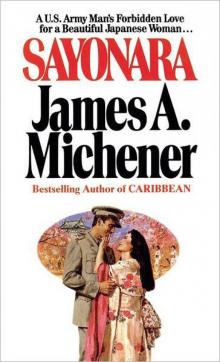- Home
- James A. Michener
Return to Paradise
Return to Paradise Read online
Return to Paradise is a work of historical fiction. Apart from the well-known actual people, events, and locales that figure in the narrative, all names, characters, places, and incidents are the products of the author’s imagination or are used fictitiously. Any resemblance to current events or locales, or to living persons, is entirely coincidental.
2014 Dial Press Trade Paperback Edition
Copyright © 1951 by James A. Michener
Copyright © 1950, 1951 by The Curtis Publishing Company
All rights reserved.
Published in the United States by Dial Press Trade Paperbacks, an imprint of Random House, a division of Random House LLC, a Penguin Random House Company, New York.
DIAL PRESS and the HOUSE colophon are registered trademarks of Random House LLC.
Originally published in hardcover in the United States by Random House, an imprint and division of Random House LLC, in 1951.
eBook ISBN 978-0-8041-5146-7
www.dialpress.com
v3.1
CONTENTS
Cover
Title Page
Copyright
THE MIGHTY OCEAN
THE ATOLL
MR MORGAN
POLYNESIA
POVENAAA’S DAUGHTER
FIJI
THE MYNAH BIRDS
GUADALCANAL
THE STORY
ESPIRITU SANTO
THE GOOD LIFE
NEW ZEALAND
UNTIL THEY SAIL
AUSTRALIA
THE JUNGLE
NEW GUINEA
THE FOSSICKERS
RABAUL
WHAT I LEARNED
Dedication
Other Books by This Author
About the Author
The Mighty Ocean
In 1948 I addressed some students at Washington and Lee University, and in the question-answer period one young man observed with asperity, “But it’s easy for you to write. You’ve traveled.”
I became angry and replied that it was my intention never again to write about foreign lands. I added, “The writer’s job is to dig down where he is. He must write about the solid, simple things of his own land.”
I believed this when I spoke, and I believe it now. And yet less than a year after my public confession, I was on my way back to the South Pacific to write another book on that languid retreat. How did this happen?
There was within me the abiding, deep and growing conviction that what happened in Asia was of sovereign importance to my country. I reasoned, “We understand the basic motivations of Europe. What takes place there may or may not please us, but at least we know how to interpret what does happen and how to build bulwarks against calamity. But in Asia most of what occurs we do not even vaguely understand, and what happens in Asia is vital.” I was therefore eager to revisit Australia, New Zealand and New Guinea to find how things were going with our forward friends. If there is anything any of us can do to encourage an understanding of Asia and its Pacific approaches, we should do it.
But not even my preoccupation with the Pacific could justify my returning merely to grind out another batch of stories upon the old theme. It is true that several immense talents spent large portions of their lives chronicling the Pacific, and no writer need be ashamed of punishing his legs while trying to reach the footsteps of Conrad, Melville, Maugham or James Norman Hall. But a writer’s artistic life is a most delicate adjustment of many factors, and I simply refused to waste mine sailing after fresh Pacific yarns.
Then it occurred to me that the trip would be justified if I attempted to write a kind of book that—so far as I knew—had never been tried before. Such an adventure would make the return to the Pacific intellectually honorable.
So I write a series of jammed-crammed essays containing all I knew about this ocean. I endeavored to make the essays both evocative and provocative. Then, when each was finished, I wrote a story growing out of the theme of the essay. Thus, the reader could see from the essay what I thought about a given island; while from the fictional story he could determine what the island thought about itself. Furthermore, this procedure would throw illumination upon the relationship between fiction and fact. Thus the first essay, “The Atoll” is a statement of fact in which each item is literally true, so far as I can ascertain. But what follows, “Mr. Morgan,” is fiction, and none of it is true except that when I read it now it seems more truthful than the essay.
There was one final problem. Would this long journey prove to be merely another of those heartbreak trips of disillusion into a past that cannot be recovered? I was apprehensive about this, for I knew that virgin impressions of great events can rarely be recaptured; but when our plane rose above the bridges of San Francisco and I saw below me this vast and mighty ocean, my heart expanded.
J. A. M.
The Atoll
Ages ago, when the world was different, the South Pacific contained many islands we have never known. Then as now the floor of the ocean rose and fell when volcanic pressures fluctuated. A violent up-thrusting that created new islands would be followed by an imperceptible subsidence which slowly dragged the newborn lands back below the surface of the sea.
About 10,000 years ago one such mountainous island rose above the warm waters near the equator. Around its edges swarmed a multitude of remarkable animals, the coral polyps, taking refuge in deep water. Slowly they began to build a calciferous reef, each new polyp adding his tiny limestone skeleton to those that had died before.
The polyps had chosen their new home with studied care. The water temperature must never go below 68 degrees, or the tiny animals would freeze. The base of their building could be no deeper than 120 feet, or they would drown. The water must be salty, but not too salty, and it had to contain an abundance of plankton, that microscopic marine life on which coral feeds. Most important of all, the water had to be fresh and free of sand, for any kind of sedimentation would suffocate the polyps.
Working slowly, dying by the multiple billions so that their limestone structures could become rock, the polyps clung to the shores of the new island and in some years raised their reef as much as three inches. Of course, the highest point was still far under water and no eye could have discerned that a miracle had already begun to take place.
For now the ever-violent ocean bed began steadily to subside. In a thousand years it fell perhaps three feet, but slowly the island was settling into the sea. Unseen, the coral continued building. Now it was less than fifty feet below the surface.
Then one day the dying island exploded into cataclysmic fury. Its volcanic flames lighted the sky for many years, but as the fierce heat died out the entire ocean bed—island, reefs, coral and all—shivered and sank deeper into the sea.
The coral was not drowned. Through many centuries it continued to build until a final day when, with some unchronicled gasp, the last fragment of the original island disappeared forever.
More than a thousand years elapsed and in that time the coral on the sunken reef continued its patient growth. It was now close to the surface and one day a solitary limestone pinnacle no bigger than a pencil broke the waves. A score of decades passed. A bird skimming the empty wastes of ocean could have seen a thin shining ribbon of white coral. A piece of driftwood caught fast and rotted. Sand began to collect and finally a seed drifted two thousand miles across the waves and found lodgment. A casuarina tree began to grow.
It was washed away. More soil collected. Igneous rock from some recent volcano floated mysteriously to the almost-born island. Sand edged the inner shore of the reef. A coconut arrived, a pandanus. In two thousand years a new fragment of earth had been created.
Now the entire reef, miles in circumference, threatened to break the surface. W
ithin the circle the sea water became dirty and all polyps on the inner shore died. Those on the outside now did the work, building the reef ever outward from its center.
A new violence, a new upheaval of the ocean floor and the entire reef was lifted twenty feet into the air. Here and there weak portions crumbled into the pounding sea, leaving narrow channels into the lagoon. At other points, where coral skeletons had been piled highest, substantial islands rose like a cluster of jewels strung along the golden strands of the reef.
At last the miracle was complete! A coral atoll, circular in form, subtended a shallow lagoon. On the outer edge giant green combers of the Pacific thundered in majestic fury. Inside, the water was blue and calm. Along the shore of the lagoon palm trees bent their towering heads as the wind directed, and after a thousand more years brown men in frail canoes came to the atoll and decided it should be their home.
The world contains certain patterns of beauty that impress the mind forever. They might be termed the sovereign sights and most men will agree as to what they are: the Pyramids at dawn, the Grand Tetons at dusk, a Rembrandt self-portrait, the Arctic wastes. The list need not be long, but to be inclusive it must contain a coral atoll with its placid lagoon, the terrifyingly brilliant sands and the outer reef shooting great spires of spindrift a hundred feet into the air. Such a sight is one of the incomparable visual images of the world.
This is the wonder of an atoll, that you are safe within the lagoon while outside the tempest rages. The atoll becomes a symbol of all men seeking refuge, the security of home, the warmth of love. Lost in a wilderness of ocean, the atoll is a haven that captivates the mind and rests the human spirit.
More than a symbol, however, the atoll is a reservoir of tangible beauty. Fleecy clouds hang over it, so that in the dawn it wears a flaming crest of gold. At midday it seems to dream in the baking heat, its colors uncompromisingly brilliant. At sunset the clouds once more reflect a shimmering brilliance. At night stars seem to hover just out of reach, and if there is a moon it does not dance upon the waters. Its reflection lies there passively like a silvered causeway to the opposite shore.
Each of the motus along the reef—the independent islands with trees—has its own characteristic charm. Some have beaches a mile wide of such dazzling sand as to blind the unprotected eye. Others contain coral gardens that delight the imagination. Still others are the home of a thousand birds, the prowling ground of sharks, the keepers of the caverns where pearls grow.
The coral itself is infinitely colored. Most startling are the bright, untempered hues: radiant blacks, garish greens, bright blues, enviable yellows and brooding purples. But after the shock of seeing such prodigal brilliance, it is the pastels that continue to invite the eye. There are delicate pinks, soft blues and airy greens. Sometimes a single patch of coral will contain a dozen shades. Again there will be an acre of one primitive color alone. Only on a living reef can you see the pageantry of coral, for once dead and exposed to air, its color fades and vanishes.
Also infinite are the forms of coral. Most spectacular are the branching arms that seem to clutch outward toward the ocean. Most unforgettable is the brain coral which reproduces in arresting likeness the shape and convolutions of the human brain. There are shelves of coral, trees of coral, great globes of it, angular skeletons, and even delicate flowers. Each is composed of the dead remnants of millions of polyps.
But to savor the true miracle of coral, you must go to the outer edge of the reef. There, suspended by ropes from a small boat, you push yourself down, down along the living face of the majestic structure. Whereas the lagoon waters were delicate and sprinkled with sunlight, the brooding waters at the reef face are sullen and black. Below you, as far as the eye can penetrate, there is nothing but great chunks of mysterious forms jutting into the breaking sea. Sometimes the reef has broken away and left small caverns. Your hand explores one and draws back in terror! An octopus hides there. Then your eye becomes accustomed to the mournful darkness and you see about your face a myriad of brilliant fish. You look in amazement, for never have you even guessed such creatures could exist. In every possible form and color these astonishing fish drift by. When you think you have seen all the wonders a reef can hold, a monstrous coral fish goes past. It has a dozen silky tails, streamers from each fin, a face like a pig’s, a striped body like a zebra’s and such colors as no artist would dare combine. Off into the caverns it goes, and your eye lingers on a dark shape gliding through the mysterious waters. Was it a shark? It turns on its side and disappears. And always at your elbow the fantastic shapes of coral, the brilliant colors, the provocative textures. Above you the great surf pounds, and now your lungs throb with pain. You pull upon the rope and lunge toward the surface, up past the glorious fish, the murky caverns and the living coral. You break the waves and catch a comber full in the face. Exhausted, you climb back into the boat. You have seen the face of the reef, the battleground from which the atoll rose, and you will never forget what you have seen.
This is how an atoll looks. Along the outer edge toward the sea—nothing. A few trees perhaps, a stretch of blinding sand, some bird nests. Along the inner shore of the largest motu a string of thatched huts, each with its share of beach. Next, three or four shacks built of wood and corrugated iron. Then a trading store with a verandah for the loafers. Then a European house painted white and red, the government quarters. Finally a big church, whitewashed, with sloping roof leading to three huge concrete tanks, also whitewashed. These are for the collection of rain, since no atoll ever has enough fresh water for cooking and drinking.
And everywhere there are coconut palms. This amazing tree is the life blood of the atoll. Its wood makes furniture. Its plaited leaves make fine baskets or hats or carpeting or partitions. A silky lace-like growth about the crown yields good mats. The heart of the palm makes the world’s best salad, the husk is perfect insulating material, and the hard shell of the nut makes good charcoal.
As if this were not enough, the liquid within the nut is a delicious substitute for drinking water and is moreover so pure that it can be used medically as a completely sterile saline solution. With safety it can be injected even into the blood stream, for in the hard shell there is always a soft eye through which a needle can be passed.
As for the meat itself, its uses are manifold. Few nuts are allowed to ripen into the hard, unpalatable stuff sold in American markets. If they do reach that age, when the milk is bitter and useless, they are made into copra for their oil, which is manufactured into soap and margarine. Most nuts are picked young, when the meat is so soft that it can be eaten with a spoon. There are six stages in the ripening of a coconut, each with its own name, each with its peculiar cooking possibilities.
The best dish is this: Take a fish caught that afternoon on the reef and cut it into strips, raw. Soak them overnight in lime juice and sea water. Pick some young coconuts and add their milk to the fish. Stand the pot in the sun for five hours. Grate up the coconut meat, add two onions and mix it with the fish. Add some salt. The result is a kind of bitter-sweet dish which tastes completely different from any other food. There is no smell of fish, no taste of sea water, no bite of lime. It is a delicious feast.
But more than the beauty, more than the coral, more than the subtle food, it is the native people who make an atoll so strange and yet so attractive. By some curious chance the natives on most Pacific atolls are Polynesians. These brown navigators consistently bypassed the commodious islands like New Guinea or the Solomons to seek out tiny atolls. Along the north coast of New Guinea there are many specks in the ocean populated by Polynesians. And scattered through the Solomons there are others. But to see atoll life at its best you must go farther east beyond Tahiti, where there are so many low-lying islands that they seem to form clouds along the horizon. There the Polynesians have built a true island culture.
Eager to share in its simplicities, many white men have also come to the atolls. A longing for solitude, an obsession about lost island
s, a yearning for the relaxation of native life have combined to lure men onto even the most desolate islands.
Have they found happiness? Many have not. I think of Bunner Langdale as the typical atoll man. A brilliant artist in pen and ink, a gifted observer, a fine storyteller, he developed a passion for the low islands that cling to the bosom of the sea. Year after year he wandered among them, taking his boat from one landfall to the next.
He was alternately a wonderful conversationalist, a moody recluse. He developed toothache, that dreaded affliction where dentists or doctors are available only once a year. He knocked off the top of the tooth and each day rammed in two drops of carbolic acid. His pain was sometimes unbearable but finally a ship put into the atoll. The doctor said he wouldn’t risk pulling the tooth while Bunner was conscious and he had no anaesthesia, so the captain sorrowfully gave Bunner the only bottle of whiskey on board and the atoll man got steaming drunk. Then the pain was numbed and he felt fine. Brandishing a chair he cried, “I’ll kill the man that touches me.” His friends tried to take him by trickery, but he outguessed them and all night roared his joy at the sudden relief from pain. In the morning he was sober with the same old tooth. Now he promised to kill the doctor if he so much as touched the tooth with the forceps. The ship sailed. Bunner went back to his carbolic acid.
He was a man you couldn’t argue with. Just before starting on a long boat trip to New Zealand he scratched himself on coral—a half-inch wound, no more—and by sailing date his leg had festered. The doctor, a different one this time, warned him that it was risky to chance such a long trip before the coral poisoning had healed. Bunner told him to go to hell, but the last eight days of the voyage were mortal agony and when he landed the leg was immediately amputated.
Still he loved the atolls and with his peg leg went back to them. Again he scratched himself on coral, the other leg this time, and again the dreadful poisoning set in. This time he doctored himself with care and for a time reduced the infection, but finally it broke into violent corruption and only a miraculous operation saved his life.

 Mexico
Mexico The World Is My Home: A Memoir
The World Is My Home: A Memoir Sayonara
Sayonara Chesapeake
Chesapeake The Novel
The Novel Rascals in Paradise
Rascals in Paradise Return to Paradise
Return to Paradise Presidential Lottery: The Reckless Gamble in Our Electoral System
Presidential Lottery: The Reckless Gamble in Our Electoral System The Source
The Source Poland
Poland Space
Space Caravans
Caravans Creatures of the Kingdom: Stories of Animals and Nature
Creatures of the Kingdom: Stories of Animals and Nature Iberia
Iberia Hawaii
Hawaii The Watermen: Selections From Chesapeake
The Watermen: Selections From Chesapeake Report of the County Chairman
Report of the County Chairman The Covenant
The Covenant The Bridges at Toko-ri
The Bridges at Toko-ri Matecumbe
Matecumbe Journey: A Novel
Journey: A Novel Centennial
Centennial Sports in America
Sports in America Texas
Texas Miracle in Seville
Miracle in Seville This Noble Land: My Vision for America
This Noble Land: My Vision for America Tales of the South Pacific
Tales of the South Pacific Bridges at Toko-Ri
Bridges at Toko-Ri Space: A Novel
Space: A Novel Presidential Lottery
Presidential Lottery Sayonara: A Novel
Sayonara: A Novel This Noble Land
This Noble Land The Covenant: A Novel
The Covenant: A Novel Miracle in Seville: A Novel
Miracle in Seville: A Novel The Bridge at Andau
The Bridge at Andau Source
Source The Source: A Novel
The Source: A Novel Journey
Journey Recessional: A Novel
Recessional: A Novel Legacy: A Novel
Legacy: A Novel The Bridges at Toko-Ri: A Novel
The Bridges at Toko-Ri: A Novel Poland: A Novel
Poland: A Novel